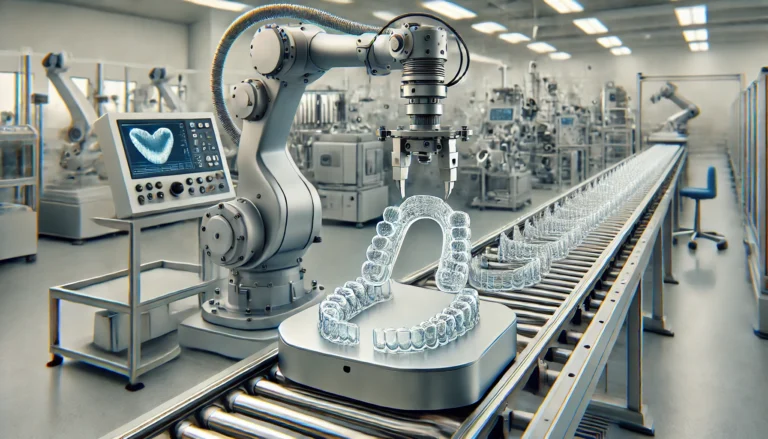
Invisalign has significantly changed the field of orthodontics by providing a discreet and effective alternative to traditional braces. This article delves into the history of Invisalign, tracing its origins from the innovative minds behind its creation to its emergence as a leader in the market.
You will discover the technology that powers its aligners, the materials utilised in their production, and the initial public response to this groundbreaking treatment. Additionally, we will examine the key factors that have contributed to its success, its evolution over the years, and what the future may hold for this innovative orthodontic solution.
Join us on a journey through the milestones of Invisalign’s development and its profound impact on the orthodontic industry.
The Concept of Invisalign
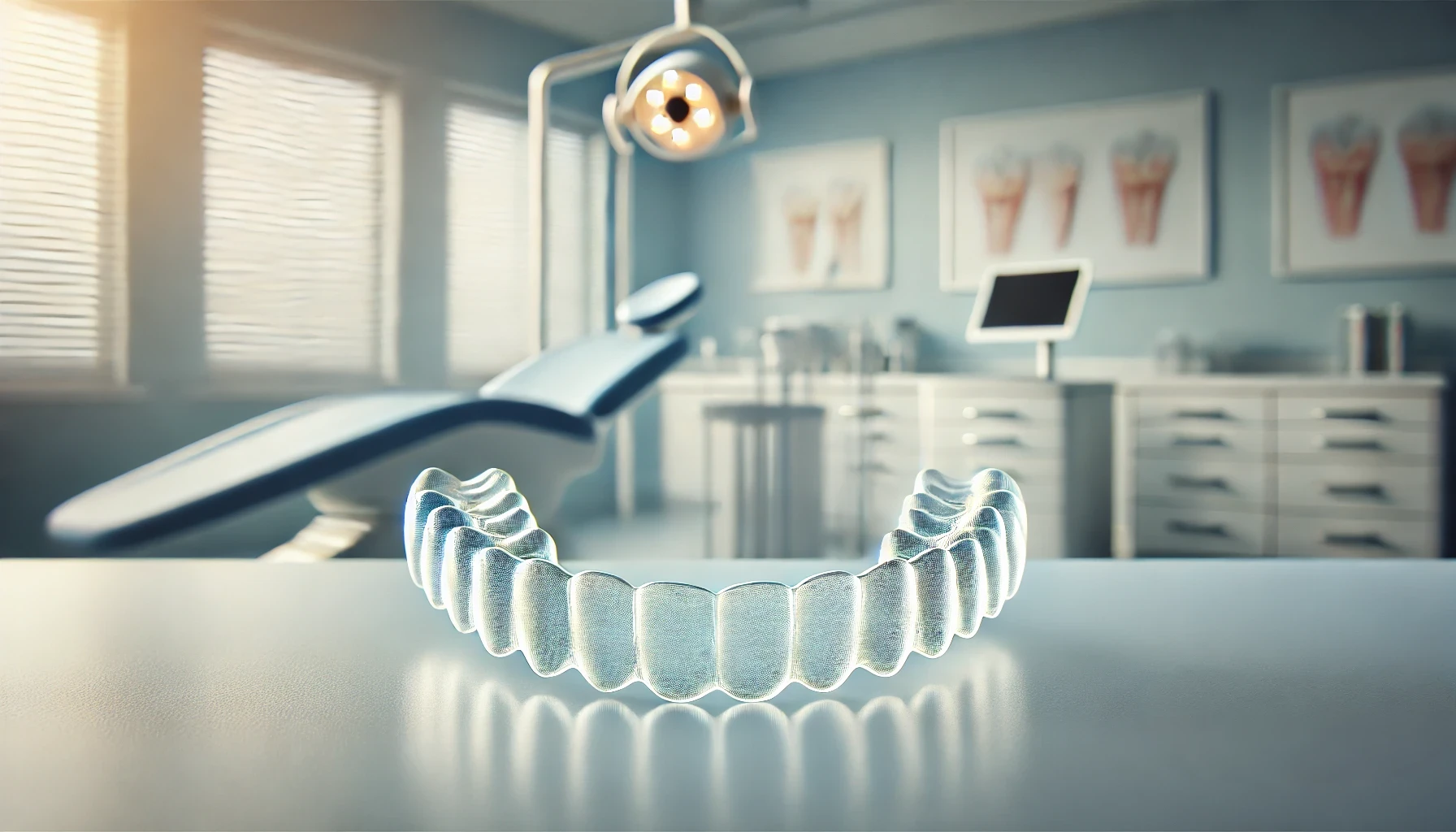
Invisalign represents a revolutionary approach to orthodontic treatment, utilising clear aligners to straighten teeth in a discreet and comfortable manner. As a prominent player in the dental industry, Invisalign provides a contemporary alternative to conventional braces, prioritising both patient comfort and aesthetic appeal.
This innovative method incorporates advanced dental technology, such as digital scanning and 3D printing, to deliver a personalised teeth alignment experience for each individual.
Who Invented Invisalign?
Invisalign was created by Zia Chishti and Kelsey Wirth in the late 1990s, representing a significant advancement in dental innovation and orthodontic treatment options. Their vision fundamentally changed the way teeth straightening is approached, utilising removable appliances to provide patients with a more convenient solution.
Chishti and Wirth encountered numerous challenges during the development of their groundbreaking idea, including overcoming scepticism from the orthodontic community and refining the technology required for precise aligner fabrication. Their primary goal was to offer a comfortable alternative to traditional metal braces, ensuring that treatment would be both effective and visually appealing for patients of all ages.
Through their unwavering determination and collaboration with dental professionals, they initiated a new era in which aligner treatment became synonymous with the quest for a better smile. This innovation ultimately enhanced patient compliance and satisfaction across the board.
What Was the Inspiration Behind Invisalign?
The inspiration behind Invisalign originated from a desire to provide patients with a more effective and comfortable method for achieving straight teeth, all without the discomfort associated with traditional braces. By prioritising patient comfort and aesthetic appeal, Invisalign emerged as a solution that aligns well with contemporary trends in dental health.
This innovative approach was not limited to merely straightening teeth; it aimed to reimagine the entire orthodontic experience. Advancements in 3D printing technology played a crucial role in allowing for the precise customisation of aligners, ensuring a snug yet gentle fit.
Patients increasingly preferred treatments that offered discretion, resulting in a growing demand for options that seamlessly integrate into their lifestyles. Additionally, the rising awareness of the link between oral health and overall well-being highlighted the need for solutions that do not compromise comfort or aesthetics.
Taking these factors into account, the evolution of dental care has markedly shifted towards more patient-centred practices, positioning Invisalign as a standout choice in the field of orthodontics.
The Development of Invisalign Technology
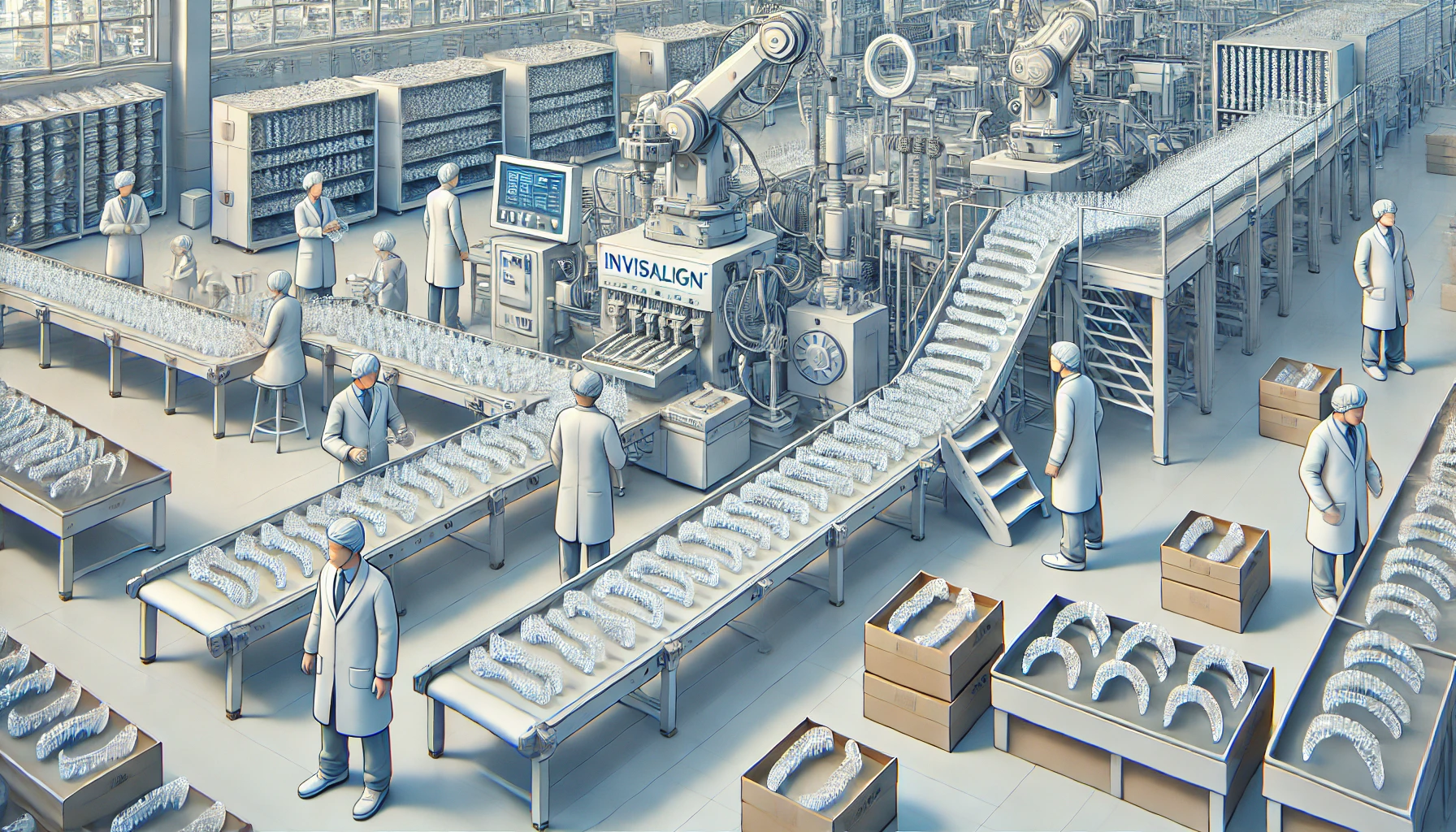
The development of Invisalign technology marks a significant advancement in the field of orthodontics. It combines cutting-edge techniques such as digital scanning and 3D printing to create customised clear aligners.
This innovative method enables precise treatment planning and efficient teeth straightening, fundamentally transforming the delivery of orthodontic care.
What Materials Are Used for Invisalign Aligners?
Invisalign aligners are made from advanced thermoplastic materials that are specifically designed to provide a comfortable and effective teeth-straightening experience. These materials are engineered for durability and flexibility, ensuring a secure fit while prioritising patient comfort throughout the treatment process.
The proprietary SmartTrack material used in these aligners is designed to be gentle against the teeth, allowing for more precise movement and thereby enhancing the overall effectiveness of the treatment. This innovative composition results in aligners that fit snugly without being rigid, significantly reducing the discomfort often associated with traditional braces.
Additionally, the clear design of Invisalign aligners offers a discreet alternative, enabling individuals to improve their smiles without feeling self-conscious. With properties that resist staining and maintain clarity over time, these aligners help to boost patient confidence throughout their orthodontic journey, ultimately contributing to higher rates of treatment acceptance and overall satisfaction.
How Does Invisalign Work?
Invisalign operates by using a series of custom-designed clear aligners that gradually move teeth into their desired positions over time. Each set of aligners is typically worn for about two weeks, after which patients transition to the next set in the series. This process allows for a personalised and effective treatment plan that aligns with individual dental goals.
This innovative method not only ensures a snug fit of the aligners against the teeth but also enables precise adjustments based on ongoing assessments of the treatment. Throughout their orthodontic journey, patients benefit from regular check-ins that help refine the treatment plan further.
The use of digital scanning technology creates a 3D model of each patient’s teeth, making it possible to accurately predict how each aligner will influence their smile. This strong connection between patient feedback and aligner design greatly enhances treatment efficiency, transforming the experience into a proactive and rewarding journey towards achieving a straighter smile.
The Launch of Invisalign

Invisalign made its debut in the market in 1999 and rapidly gained popularity due to its innovative approach to orthodontics. This introduction represented a significant shift in the dental profession, as consumers began to prefer clear aligners over traditional braces.
This preference has paved the way for a new era in dental aesthetics.
When Was Invisalign First Introduced to the Market?
Invisalign was first introduced in 1999, marking a transformative moment in the world of orthodontic treatment options available to consumers. This launch represented a significant milestone for both the company and the dental profession, as it provided a new avenue for patients to achieve their desired teeth alignment without the noticeable appearance of traditional braces.
From the very beginning, Invisalign challenged the conventional methods that primarily depended on metal brackets and wires. Initially, many orthodontists expressed scepticism regarding the effectiveness of these clear aligners, questioning whether they could deliver the same level of precision and results as traditional methods.
However, as word spread and patient testimonials started to appear, acceptance of Invisalign began to grow. By the early 2000s, consumer interest surged, fuelled by the desire for a more discreet and comfortable alternative to fixed orthodontic appliances.
This shift not only revolutionised individual choices in orthodontics but also impacted market dynamics, leading to increased competition and innovation within the industry.
How Was Invisalign Received by the Public?
Upon its release, Invisalign received a mixed response from the public; however, it quickly gained popularity among adults seeking a discreet method to straighten their teeth. The focus on patient comfort and aesthetic appeal aligned well with consumer trends, leading to a growing acceptance and demand for aligner treatment, despite the cost of Invisalign aligners being a consideration for some.
As more individuals shared their positive experiences, the innovative aligner system attracted attention, especially from those hesitant to wear traditional braces due to their visibility. Patients valued the flexibility of being able to remove the aligners for eating and maintaining oral hygiene, which contributed to high satisfaction rates.
Dental professionals also began to recognise its effectiveness in addressing various orthodontic issues, further enhancing its credibility.
This combination of positive patient testimonials and endorsements from experts played a crucial role in shaping public perceptions, ultimately encouraging more adults to embrace this modern approach to orthodontics.
Invisalign’s Rise to Market Leader
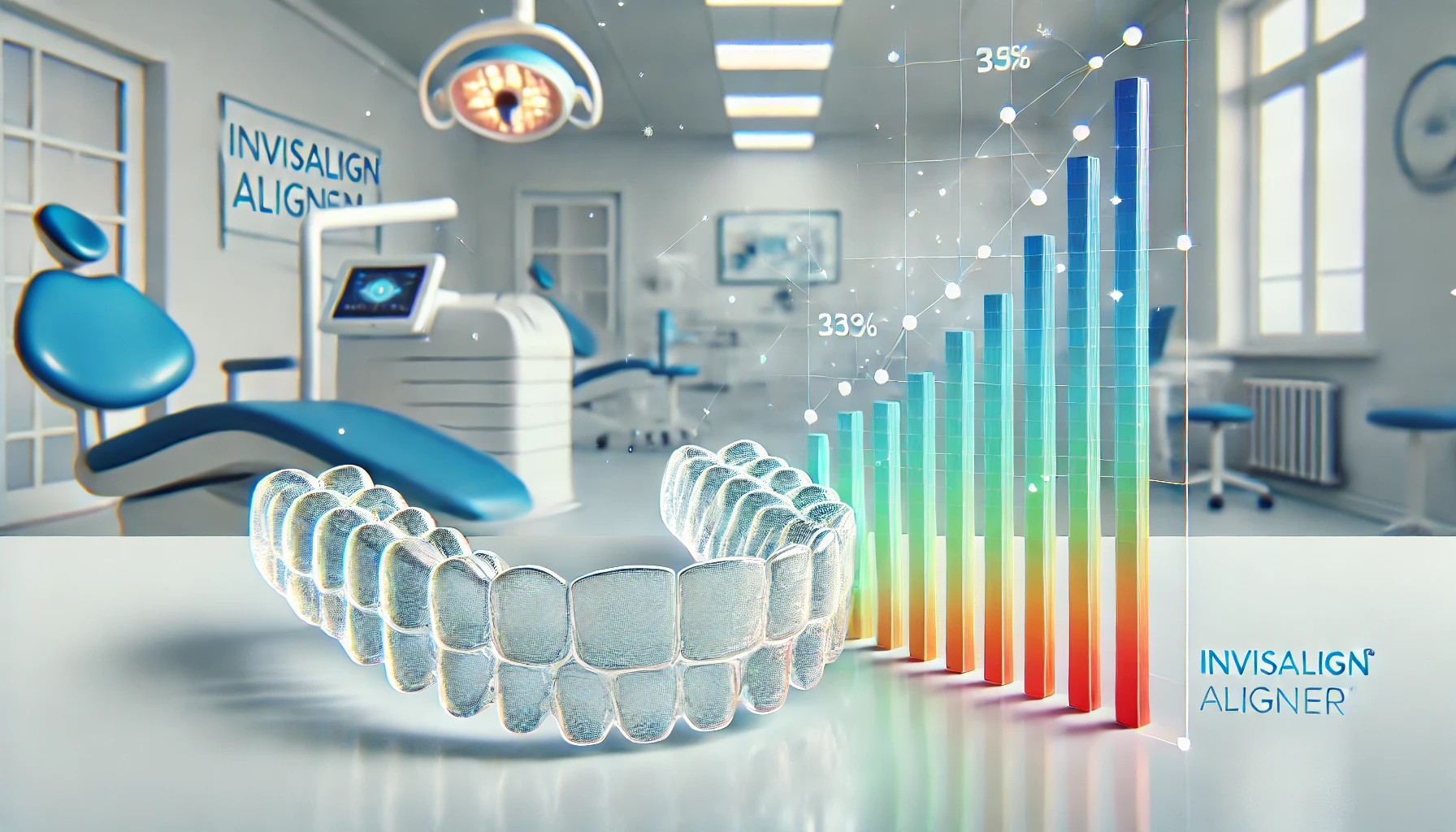
Invisalign has established itself as a market leader in the orthodontics field, thanks to its innovative product offerings and marketing strategies that effectively connect with both consumers and dental professionals.
By continually refining its aligner treatment and prioritising patient engagement, Invisalign has successfully created a competitive advantage within the orthodontic community.
What Factors Contributed to Invisalign’s Success?
Several key factors have significantly contributed to the success of Invisalign. These include innovative marketing strategies, collaborations with dental professionals, and a strong emphasis on educating consumers about the benefits of clear aligners.
Together, these elements have played a vital role in enhancing brand recognition and establishing Invisalign as a trusted name in orthodontic treatment.
The company’s dedication to providing a superior customer experience has further strengthened its reputation in the industry. By actively engaging with potential patients through informative resources and comprehensive treatment guides, Invisalign has effectively positioned itself as a leader in patient-focused innovations.
Additionally, clinical studies that validate the effectiveness of clear aligners have been crucial. These research findings have instilled confidence among both orthodontists and patients, thereby enhancing the perceived value of the product.
An analysis of the competitive landscape shows that Invisalign’s ability to adapt to market trends and consumer preferences has allowed it to maintain a dominant position, ultimately influencing a remarkable shift within the orthodontic community.
How Did Invisalign Revolutionise the Orthodontic Industry?
Invisalign has truly transformed the orthodontic industry by offering a clear and comfortable alternative to traditional braces, fundamentally altering the perception and delivery of orthodontic treatment. This innovation has not only improved the patient experience but has also motivated other companies to invest in dental technology and advancements in aligner treatments.
As a result, a variety of alternatives have entered the market, providing patients with diverse options for their orthodontic care. The emergence of clear aligners has expanded treatment possibilities and shaped consumer expectations regarding comfort, aesthetics, and convenience in dental procedures.
Patients today are more informed and actively engage in discussions about their treatment options, which has led to a growing demand for customised solutions that cater to their specific needs.
The impact of this dental innovation has fostered a competitive environment, driving advancements in technology and techniques, and ultimately contributing to a more accessible and efficient orthodontic care experience.
The Evolution of Invisalign
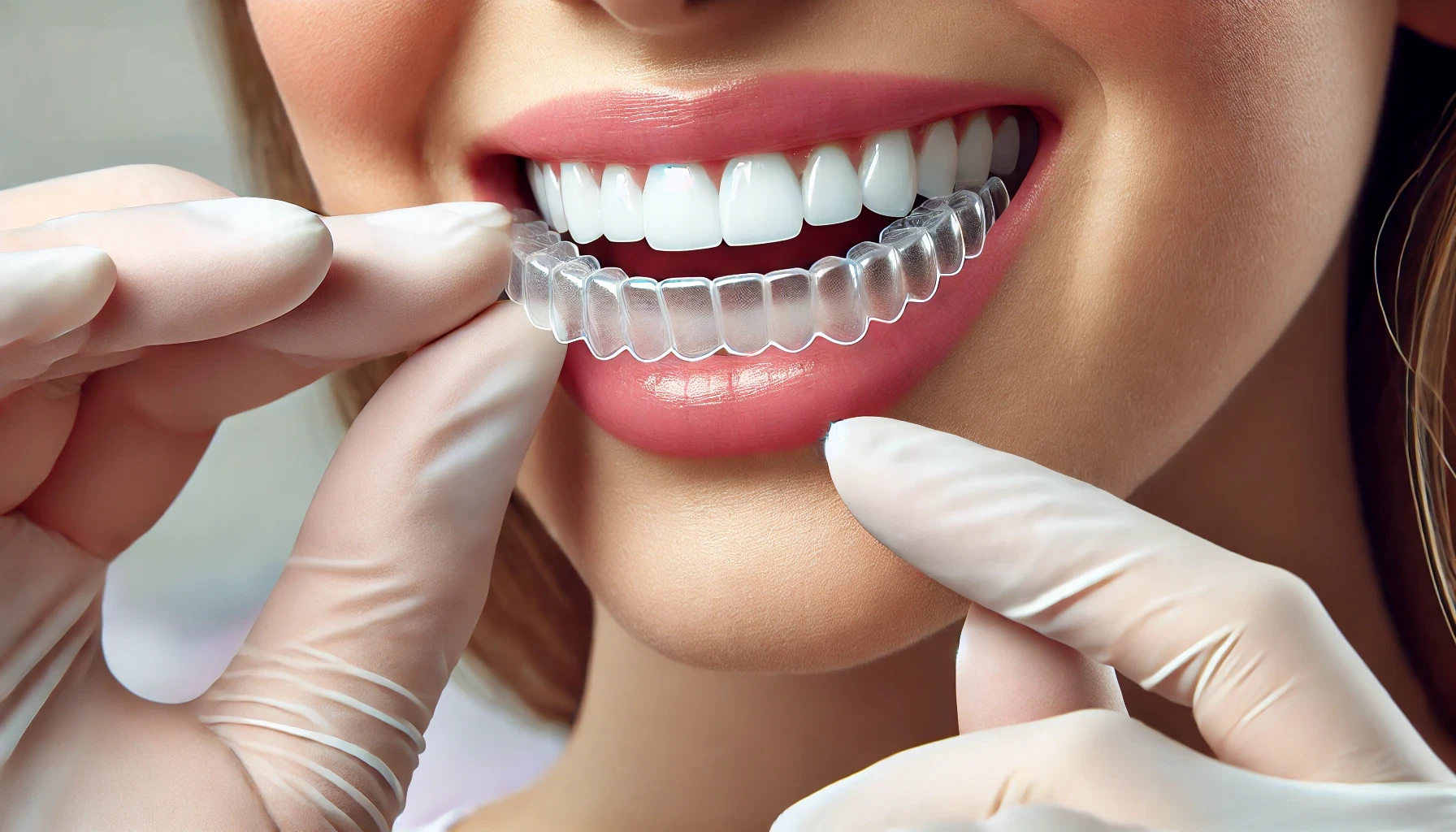
The evolution of Invisalign has involved a series of continuous improvements in product design, materials, and technology, all of which demonstrate a steadfast commitment to enhancing patient outcomes and satisfaction.
Throughout the years, Invisalign has actively integrated feedback from both dental professionals and patients, resulting in notable advancements in treatment efficiency and customisation.
What Improvements Have Been Made to Invisalign Over the Years?
Over the years, Invisalign has made significant strides in its aligner treatment by incorporating valuable patient feedback and leveraging advancements in dental technology. These improvements have primarily aimed at enhancing comfort, reducing treatment duration, and broadening the spectrum of conditions that aligners can effectively address.
Recent innovations include the introduction of SmartTrack material, which not only provides a better fit and more precise tooth movements but also improves comfort, making each aligner less noticeable. Furthermore, advancements in 3D treatment planning have enabled the development of more personalised and efficient treatment pathways, resulting in a notable reduction in the overall duration of therapy.
These enhancements have been vital in increasing patient satisfaction, as individuals can now anticipate quicker results and a more customised approach to their orthodontic needs. Additionally, the integration of virtual monitoring tools give the power tos patients to track their progress remotely, further enriching their overall experience and engagement throughout the treatment process.
What Are the Different Types of Invisalign?
Invisalign offers a variety of clear aligners designed to meet the specific needs of different patients, including Invisalign Full, Invisalign Teen, and Invisalign Express. Each type addresses distinct orthodontic challenges and patient demographics, ensuring a tailored treatment experience.
Invisalign Full is particularly suited for comprehensive cases, as it can accommodate a wide array of dental issues such as overcrowding and bite problems. This option is ideal for adult patients seeking extensive corrections.
On the other hand, Invisalign Teen is designed specifically for adolescents, incorporating compliance indicators to encourage younger patients to adhere to their treatment plans.
For those who need only minor adjustments, Invisalign Express provides a quicker solution, typically favoured by adults who are looking for a fast-track option. The availability of these different aligners highlights the importance of personalised orthodontic solutions, allowing each patient to achieve their desired smile with both comfort and confidence.
The Future of Invisalign

The future of Invisalign appears quite promising, as ongoing investments in technology and research are fuelling continuous improvements and innovations in clear aligner treatment.
As the orthodontic industry evolves, Invisalign is focused on staying ahead of emerging trends while remaining committed to ensuring patient satisfaction and providing effective treatment solutions.
What Innovations Can We Expect to See in Invisalign in the Future?
Future innovations in Invisalign are likely to focus on enhancements in aligner materials, improved digital treatment planning, and the incorporation of artificial intelligence to optimise both treatment efficiency and patient outcomes. While these advancements aim to solidify Invisalign’s position as a leader in orthodontic technology, they also highlight the growing demand for effective alternatives to Invisalign that cater to diverse patient needs and preferences.
Research teams are actively investigating biocompatible materials to provide greater comfort and durability, appealing to patients seeking discreet orthodontic solutions. Additionally, the implementation of advanced 3D imaging technologies is anticipated to improve treatment outcome simulations, enabling precise adjustments even before the aligners are produced.
Furthermore, the utilisation of machine learning algorithms could facilitate customisable treatment paths that adapt to each patient’s unique dental structure, streamlining the process to be faster and more in line with current industry standards.
Overall, these innovations are designed to transform the patient experience, fostering increased satisfaction and trust in digital aligner systems while raising the bar for all aligner options, including alternatives to Invisalign.
How Will Invisalign Continue to Impact the Orthodontic Industry?
Invisalign’s ongoing influence on the orthodontic industry is likely to be characterised by its ability to adapt to changing consumer demands and technological advancements, which will enhance patient engagement and satisfaction. Part of this engagement includes patient education on the importance of keeping your Invisalign trays clean and hygienic, a crucial aspect of ensuring both the effectiveness of the treatment and maintaining oral health.
As clear aligners continue to gain popularity, Invisalign is well-positioned to lead the way in shaping the future of orthodontic care. By integrating innovative digital tools and offering personalised treatment plans, Invisalign has transformed how patients view orthodontic care, setting a new standard for convenience and aesthetics.
The rise of Invisalign has also prompted competitors to improve their offerings, resulting in a diverse array of options tailored to various demographics, from teenagers to adults seeking discreet solutions. This evolution in the orthodontic landscape reflects the growing demand for effective, less intrusive treatments that prioritise patient comfort and hygiene.
Frequently Asked Questions
What is the concept behind Invisalign?
The concept behind Invisalign is to create a discreet and comfortable alternative to traditional metal braces for teeth straightening. It uses custom-made clear plastic aligners that gradually shift the teeth into their desired position.
When was Invisalign first introduced?
Invisalign was first introduced in 1997 by Zia Chishti and Kelsey Wirth as an alternative to metal braces.
How did Invisalign become a market leader?
Invisalign gained popularity in the early 2000s due to its convenience and effectiveness. It also gained a significant boost from celebrity endorsements and advancements in technology that made the aligners more precise and efficient.
What advantages does Invisalign offer over traditional braces?
Invisalign offers several advantages over traditional braces, including being virtually invisible, removable for eating and oral hygiene, and more comfortable to wear. It also requires fewer appointments for adjustments.
What challenges did Invisalign face in its early stages?
In its early stages, Invisalign faced challenges with gaining acceptance from the orthodontic community and fine-tuning the technology to address more complex cases. However, the company invested in research and development, leading to improved outcomes and increased adoption.
What developments have occurred in Invisalign technology over the years?
Invisalign technology has continually evolved since its inception, with advancements such as SmartTrack material for more precise aligners, SmartForce attachments for more complex tooth movements, and the introduction of 3D printing technology for custom aligners.

